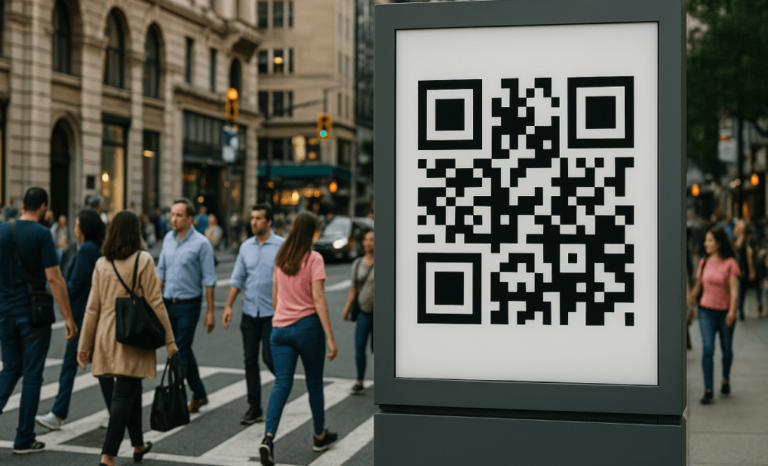What are some standout QR code advertising examples?
QR code advertising is everywhere these days, but not all campaigns are created equal. In this guide, we’ll walk through some of the most creative and effective QR code advertising examples from top brands. Whether you’re looking to boost customer engagement, increase app downloads, or connect users to digital content instantly, these examples can inspire your next marketing move.
Which brands have launched successful QR code advertising campaigns?
Several global brands have embraced QR code advertising in clever and impactful ways:
Burger King: During lockdown, Burger King aired a television commercial with a bouncing QR code. Viewers who successfully scanned it were rewarded with free product coupons. The campaign combined gamification, urgency, and value in one seamless experience.
Guinness: The beer brand designed a special pint glass that revealed a scannable QR code only when filled with Guinness. The code linked to exclusive content, promotional offers, and social media integrations, enhancing both the drinking experience and brand engagement.
Amazon: Amazon has experimented with QR codes on billboards and product packaging to drive users to location-specific deals. These campaigns connect physical ads with personalized digital offers, reinforcing Amazon’s omnichannel marketing strategy.
These real-world examples demonstrate the versatility and power of QR code technology when applied creatively.
Why are QR codes so popular in advertising?
QR codes bridge the gap between the physical and digital worlds. These small, square patterns can store vast amounts of information and are scannable by almost any mobile device. As consumer behavior shifts towards mobile-first interactions, QR codes offer a frictionless way to connect the offline world with online content. Whether used in print ads, packaging, or retail displays, they make it easy for users to access landing pages, watch video tutorials, learn more about a product, or even claim special offers—all with a single scan. Their low cost and high versatility make them indispensable tools for marketers aiming to enhance customer engagement and deliver instant value.
How do dynamic QR codes enhance advertising campaigns?
Dynamic QR codes add a layer of flexibility that static codes can’t offer. With dynamic QR codes, you can change the destination URL or the type of content after the code has been printed or distributed—making them perfect for ongoing or time-sensitive marketing campaigns. For example, a brand could launch a QR code campaign today and later update the linked content to reflect new promotions, product launches, or seasonal messages. This adaptability allows marketers to test different approaches, compare engagement rates, and adjust campaigns in real time based on performance data. It also means businesses can get more mileage out of their printed marketing materials by keeping the content fresh and relevant.
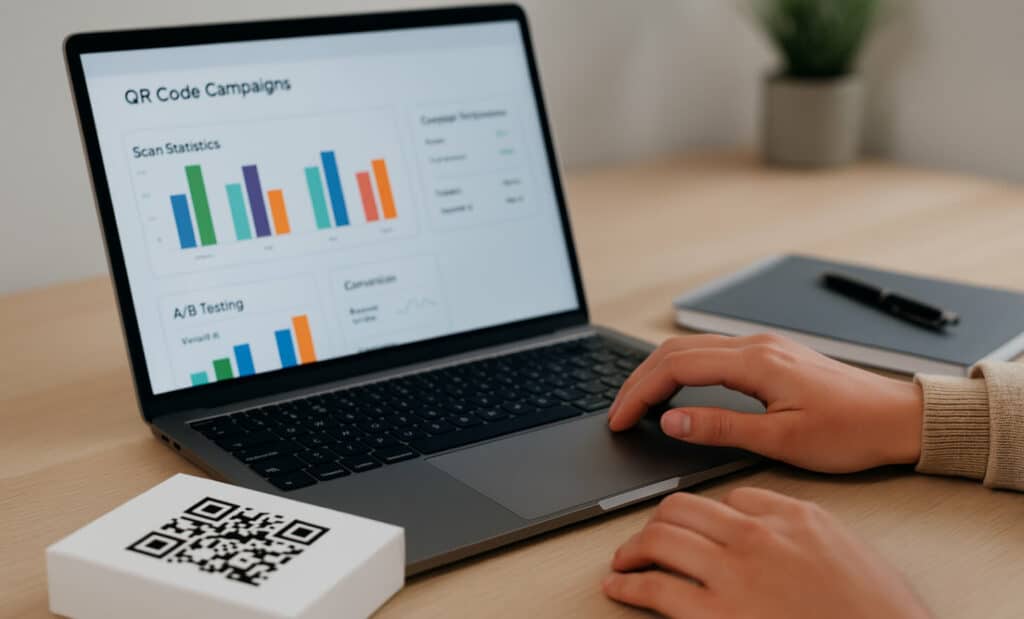
What makes a QR code campaign successful?
A successful QR code campaign is more than just placing a code on a poster or flyer. First, the code must be prominently displayed and easy to scan. Next, the call to action should be clear and compelling—tell users exactly what they’ll get by scanning. The destination should be mobile-optimized and provide genuine value, such as exclusive discounts, engaging content, or useful information. Effective campaigns also include a way to track and measure interactions, allowing marketers to gain valuable insights into user behavior. Combining creativity, usability, and data-driven strategies turns a simple QR code into a powerful driver of customer engagement and conversion.
What role do QR codes play in print ads?
QR codes transform traditional print marketing materials into interactive experiences by offering readers a way to engage further with your brand beyond the page. For example, a magazine ad for a fashion brand might include a QR code that links directly to a limited-time collection, behind-the-scenes content, or a shoppable lookbook. This integration of print and digital creates a seamless user journey, extending the life and value of your print investment. By tracking QR code scans, marketers can also measure the true impact of print materials in a way that was not previously possible.

Can QR codes be used in interactive installations?
Yes! QR codes are becoming a staple in experiential marketing campaigns. Brands have created interactive installations using giant QR codes displayed on billboards, pop-up stores, or even public spaces like parks and transit stations. These installations often link to exclusive rewards, virtual reality experiences, or interactive games that invite users into a brand’s virtual world. The key is to make the experience immersive and memorable—scanning the code should trigger a sense of surprise, delight, or exclusivity that strengthens the user’s connection with the brand.
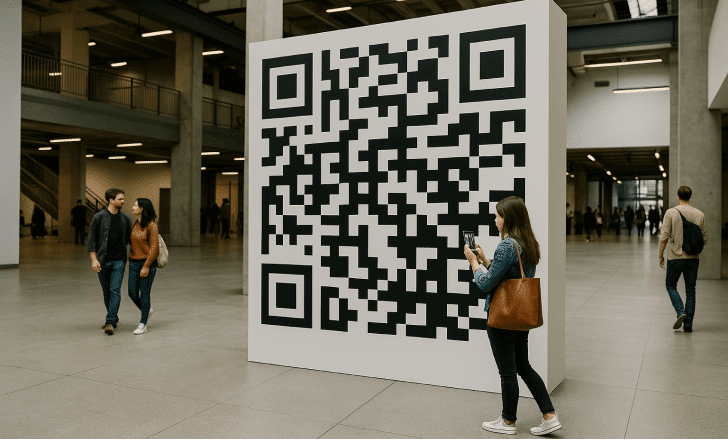
How are QR codes used in product packaging?
Adding QR codes to product packaging turns everyday items into digital gateways. Whether it’s a snack wrapper or a cosmetics box, scanning the QR code can offer consumers valuable content such as video tutorials, user-generated reviews, or augmented reality try-ons. Brands can also use QR codes for authenticity checks or to share sustainability information, which adds transparency and builds trust. This additional layer of digital interaction enhances the overall customer experience while encouraging repeat engagement and fostering brand loyalty.

What are some ways to use QR codes in retail?
Retailers are leveraging QR codes in-store to create a more personalized and convenient shopping experience. QR codes placed on shelves, signage, or displays can provide instant product comparisons, digital coupons, or exclusive behind-the-scenes stories. Some stores use them to facilitate contactless payments or to sign up customers for loyalty programs. In global markets, QR codes can direct users to content in their local language, making it easier to connect with diverse audiences. These small additions deliver big returns by enhancing in-store engagement and driving foot traffic to digital channels.
How can QR codes support mobile app downloads?
A QR code advertising campaign is a smart way to increase mobile app installs with minimal friction. By linking QR codes directly to app store pages (Google Play or Apple App Store), users can instantly download your app with just one scan. This removes the need for manual searches or typing URLs, streamlining the entire onboarding process. Placing QR codes on print ads, product packaging, or event materials also helps brands reach users in the physical world and convert them into app users in seconds. Many businesses also use dynamic QR codes to switch between iOS and Android destinations based on the user’s device, improving the user experience and boosting conversion rates. This strategy is especially useful for promoting limited-time features, updates, or gamified experiences that support app engagement.
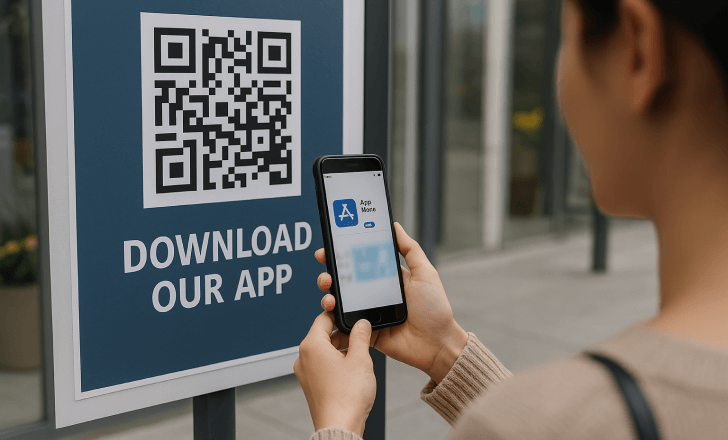
How can brands collect data using QR code technology?
QR code technology doesn’t just connect users to content—it also opens the door to data-driven insights. Every QR code scan can provide marketers with valuable information, including the location, date, time, and device type used for the scan. This data helps evaluate campaign performance, understand customer behavior, and optimize future marketing strategies. When paired with dynamic QR codes, brands can also track which version of a QR code campaign performs best across different audience segments. By incorporating QR codes into various touchpoints—flyers, digital screens, or product labels—brands collect real-time feedback on engagement without disrupting the user experience. This approach supports continuous improvement in marketing campaigns and helps refine targeting efforts.
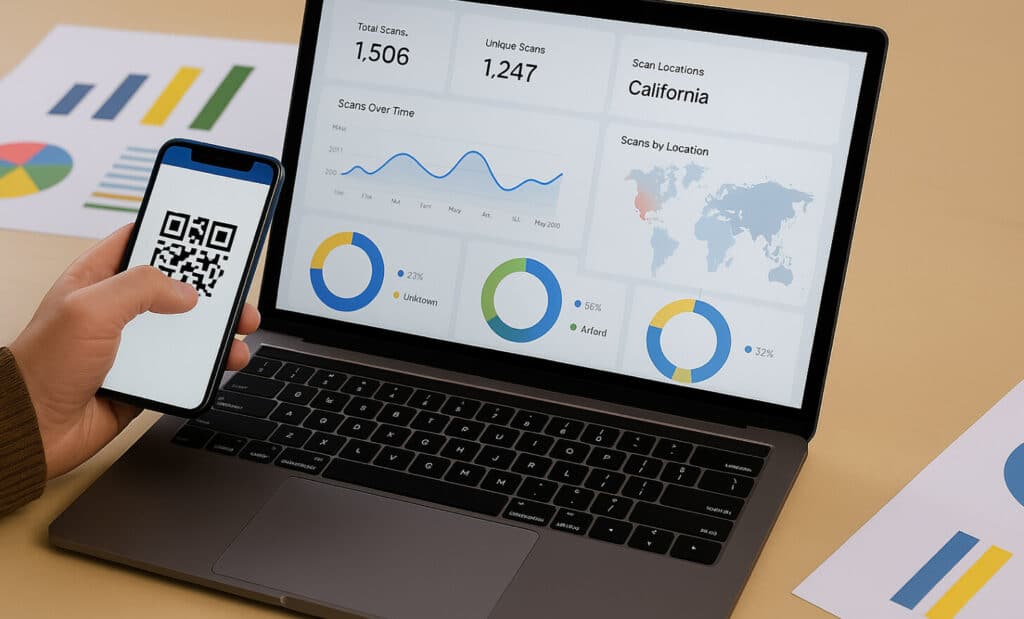
What’s the difference between static and dynamic QR codes in campaigns?
Static and dynamic QR codes may look the same, but they function very differently in marketing campaigns. A static QR code contains fixed information, meaning once it’s created and printed, the destination URL or content cannot be changed. It’s suitable for simple, one-time-use cases where flexibility isn’t required. On the other hand, a dynamic QR code is far more versatile. It stores a short redirect URL, allowing the underlying destination to be updated at any time. This feature is ideal for evolving marketing strategies, A/B testing, and multi-phase QR code campaigns. For example, a brand can reuse the same printed QR code to direct customers to different seasonal promotions throughout the year. Dynamic QR codes also enable scan tracking, campaign analytics, and easier integration into customer engagement platforms.
How do QR codes support omnichannel marketing?
QR codes serve as powerful connectors in omnichannel marketing strategies by linking physical and digital marketing efforts. By placing QR codes on flyers, product packaging, retail signage, and direct mail, brands can guide consumers to personalized landing pages, social media accounts, or exclusive offers. This consistent connection across platforms helps deliver a seamless and unified customer experience. Additionally, dynamic QR codes can be adjusted to support specific campaigns or geo-targeted messaging, ensuring that the content remains relevant to the user. By integrating QR code usage across multiple touchpoints—both online and offline—brands can better track user interactions and drive higher engagement rates while unifying messaging across all channels.

Are there any examples of QR codes used in restaurants?
Yes! The restaurant industry has widely adopted QR codes to streamline customer interactions and enhance dining experiences. From digital menus and contactless ordering to loyalty programs and promotional games, QR code usage has revolutionized how restaurants connect with diners. For instance, scanning a QR code at the table can let customers view the menu in their local language, place an order, and even pay—all through their mobile device. Some restaurants use QR codes in advertising campaigns to promote special events or limited-time dishes, while others include them on receipts for feedback surveys or rewards. This approach improves efficiency, reduces contact points, and deepens customer engagement—all while gathering valuable insights from each scan.
How do QR codes help brands personalize customer journeys?
Using dynamic QR codes, marketers can deliver highly targeted experiences based on user behavior, demographics, or location. By integrating QR codes into packaging, email campaigns, or retail signage, brands can guide customers to tailored content such as personalized offers, loyalty rewards, or product suggestions. These personalized interactions foster brand engagement, build trust, and enhance customer satisfaction. With each scan, brands can gather data to further optimize future experiences—making QR codes a powerful tool for driving one-to-one marketing in a scalable, efficient way.
What are some creative QR code advertising placements?
Brands are pushing boundaries with qr code advertising examples that turn heads and generate viral buzz. From buildings and sidewalks to fashion runways and even drone displays in the sky, QR codes have made their way into some of the most unexpected places. For example, some retailers embed codes in clothing designs or murals that link to interactive content or exclusive offers. These unique placements drive curiosity and increase qr code scans, while creating memorable, shareable moments. Creative placements also help brands stand out in a crowded media landscape and reinforce the versatility of QR code advertising.
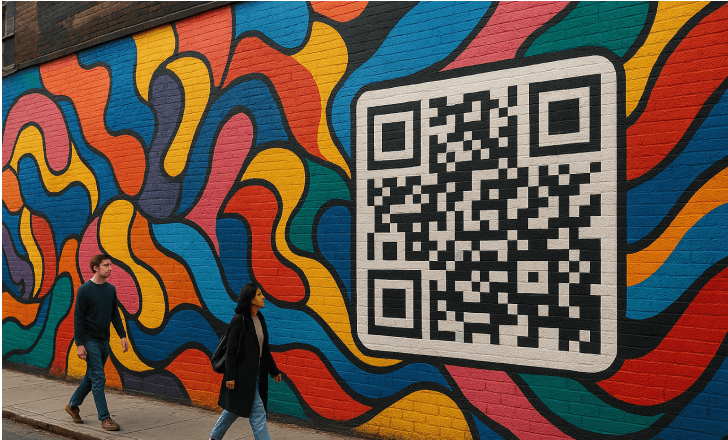
Can QR codes be used to share video tutorials?
Absolutely. QR codes are a seamless way to connect users to video content that enhances the customer experience. Whether you’re sharing product demonstrations, unboxing videos, instructional guides, or behind-the-scenes brand stories, linking QR codes to videos boosts engagement and increases time spent with your content. This is especially useful for complex products or services that benefit from visual explanation. Marketers can place QR codes on product packaging, instruction manuals, or even in-store displays to provide instant access to helpful and entertaining video tutorials.
How do QR codes enhance print marketing materials?
Incorporating QR codes into print marketing materials transforms static content into dynamic, interactive brand experiences. A printed catalog, flyer, or brochure can instantly become a gateway to digital engagement when a QR code connects users to product pages, promotional videos, or mobile apps. This strategy not only extends the shelf life of your marketing collateral but also offers measurable campaign performance through QR code scans. For marketers looking to blend traditional and digital tactics, QR codes offer a cost-effective solution to drive traffic, collect valuable insights, and improve return on investment.
How do QR codes influence customer engagement?
QR codes are interactive by nature, inviting users to take action—whether that’s claiming a discount, joining a loyalty program, or exploring bonus content. Their ease of use and instant access to information make them a frictionless tool to enhance customer engagement. When combined with gamified experiences, exclusive rewards, or personalized offers, QR code interactions can turn passive audiences into active participants. This level of engagement helps foster brand loyalty and encourages repeat interactions across both physical and digital channels.

How do you create a QR code for your next campaign?
Creating a QR code is fast and simple using a trusted qr code generator. Most platforms allow you to create dynamic QR codes that can be updated as your campaign evolves. Start by choosing the type of content you want to share—such as a website, landing page, video, app download, or digital coupon—then input the URL into the generator. Once created, you can customize the appearance of the QR code to match your brand colors and download it for use across your marketing materials. Be sure to test the QR code for functionality on multiple mobile devices before launching your campaign.
Can QR codes be used in educational campaigns?
Yes, educational institutions and nonprofits increasingly use QR codes as versatile tools to deliver digital content in innovative ways. QR codes can link to online syllabi, learning modules, sign-up forms, event calendars, or even virtual tours of campuses. These codes are often added to posters, brochures, and classroom materials to provide instant access to valuable information without requiring manual searches. In nonprofit awareness campaigns, QR codes are used to collect donations, share campaign updates, or guide users to advocacy actions—helping to connect audiences emotionally and practically to a cause. By using a dynamic QR code, organizations can keep content relevant and updated across multiple campaigns.
How does QR code advertising support brand storytelling?
QR code advertising enhances storytelling by giving customers direct access to multimedia narratives that strengthen emotional connections with a brand. For instance, scanning a QR code might launch a video message from the founder, showcase a product’s journey from concept to creation, or offer a behind-the-scenes look at a company’s mission and values. These interactive brand experiences drive deeper engagement and allow businesses to stand out in a crowded digital landscape. By embedding QR codes in packaging, print ads, or events, brands can build continuity between physical interactions and digital storytelling—helping to foster brand loyalty and support long-term business growth.
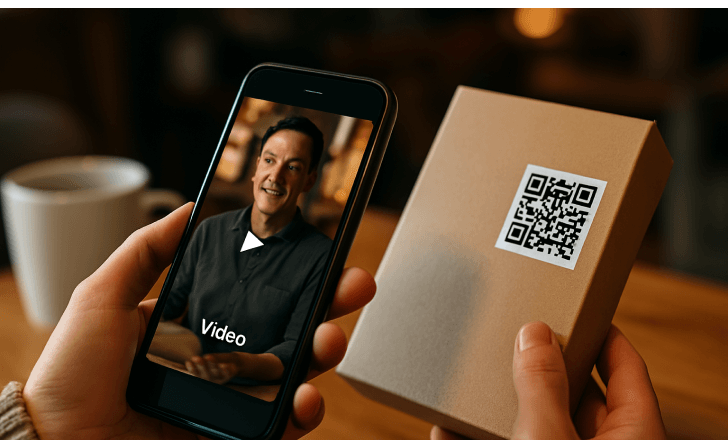
How can businesses use QR codes to connect with local audiences?
QR codes can be powerful tools for connecting with regional or location-specific audiences when combined with personalized content. By directing scans to landing pages in the local language, businesses ensure that messaging resonates more deeply with local communities. Retailers can use location-aware QR codes to offer geo-targeted promotions, while restaurants or service providers can use them to display nearby offers, opening hours, or booking forms tailored to a specific area. This localized approach not only boosts customer engagement but also strengthens a brand’s relevance and trust in diverse markets. It’s an especially effective strategy when paired with physical marketing materials in stores, transit shelters, or community centers.
What data can you collect from QR code interactions?
Each time someone scans a QR code, it creates an opportunity to collect rich, actionable data. With dynamic QR code technology, brands can access analytics such as the number of scans, time and date, geographic location, and the type of device used. These data points provide valuable insights that help marketers better understand their target audience and measure the effectiveness of marketing campaigns. By analyzing QR code interactions across various channels, businesses can refine messaging, adjust placements, and identify which touchpoints drive the most engagement. This level of transparency empowers smarter marketing decisions and supports data-driven strategies for growth.
How do QR codes drive sales in marketing campaigns?
QR codes can significantly increase conversions when incorporated thoughtfully into marketing materials. By linking to exclusive rewards, promotional pages, product trials, or limited-time offers, they create a sense of urgency and drive users to act. For example, scanning a QR code in a print ad might offer instant access to a special discount, while a code on packaging might unlock free samples or loyalty points. These quick, interactive pathways from offline media to digital action help bridge the physical and digital worlds, creating measurable sales opportunities and improving the overall ROI of a campaign. The convenience they provide leads to more customer interaction and more sales generated.

What are some tips for placing QR codes effectively?
Placement plays a crucial role in the success of any QR code advertising campaign. To ensure your QR code performs well, it should be placed in highly visible locations with sufficient contrast for easy scanning. Include a strong call to action—such as “Scan for 20% Off” or “Watch the Tutorial”—so users know what to expect. Test your code across multiple devices and lighting conditions to avoid technical issues. Also consider integrating QR codes into existing marketing materials like posters, flyers, packaging, or event signage. By experimenting with different placements and formats, marketers can improve scan rates and gather more valuable data.
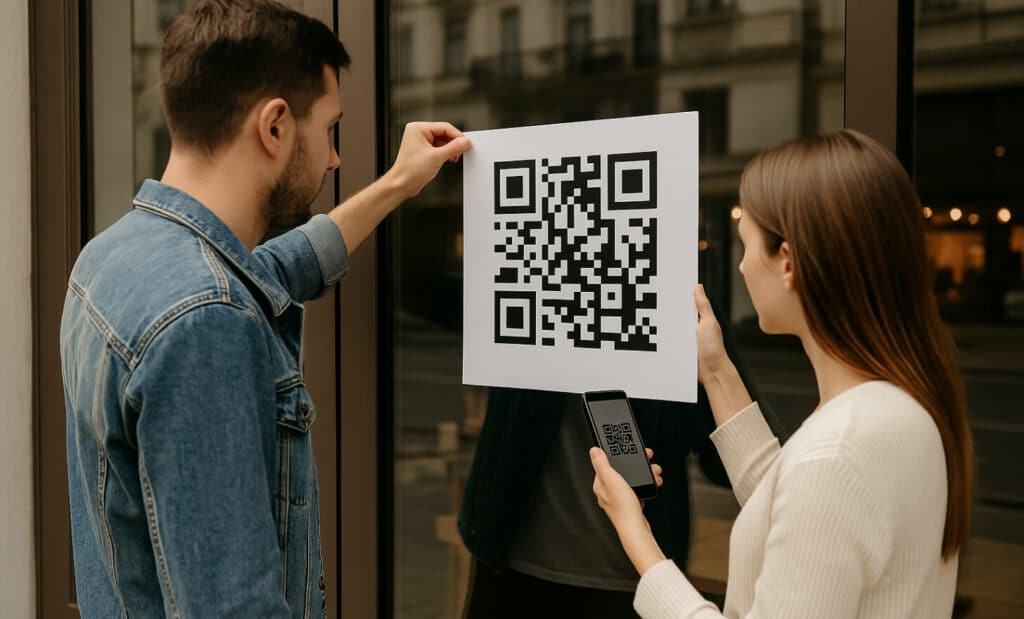
How can QR code usage improve over time?
Continual improvement is essential for maximizing the impact of QR code marketing campaigns. Start by using dynamic QR codes that enable you to update destinations, content, or offers without reprinting materials. Then, monitor scan metrics regularly to evaluate performance. Look at scan rates, locations, time of day, and user behavior to identify trends. Use this data to test new calls to action, adjust landing pages, or change placements for better results. Refresh campaigns periodically with updated content or seasonal offers to keep audiences engaged. Over time, this iterative approach leads to more effective QR code usage and greater long-term value for your business.
